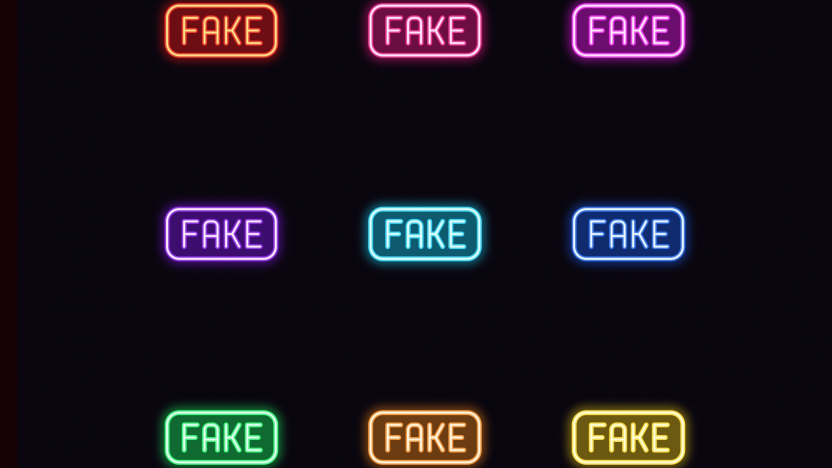The worst e-commerce sites for counterfeit products online

The '2024 Review of Notorious Markets for Counterfeiting and Piracy' by the US Trade Representative (USTR) reveals some positive developments in anti-counterfeiting by e-marketplaces but an alarming rise in the sale of counterfeit medicines by illegal online pharmacies, says Marc-Emmanuel Mellet.
In this article, we decipher the main takeaways from the USTR's '2024 Review of Notorious Markets for Counterfeiting and Piracy'. On the agenda: an alarming growth in the sale of counterfeit medicines, some positive developments in the fight against counterfeiting since the 2023 report and an updated ranking of the most problematic merchant platforms selling counterfeit products online.
The purpose of the USTR research
Counterfeiting and copyright infringement cause significant economic losses for companies, stifling innovation and exposing consumers to health and safety risks. Through its research into counterfeit products online, the USTR aims to encourage governments and the private sector to strengthen their fight against counterfeiting. The research also highlights the positive efforts of some authorities and companies by revisiting the markets identified in previous reports to assess if any progress has been made.
The threat of counterfeit medicines
The 2024 report pays particular attention to the growing threat of illegal online pharmacies, which are taking advantage of the rise of e-commerce, amplified by the pandemic. It is estimated that 96% of the 35,000 online pharmacies worldwide operate illegally, selling counterfeit medicines without a prescription, without regulation and often dangerous to health.
These sites mimic legitimate platforms with fake compliance labels, misleading consumers. For example, the research cites a 2023 survey, which found that 54% of consumers mistakenly believe that all online pharmacies are FDA (Food and Drug Administration) approved.
Buying medicines from unauthorised and illegal online pharmacies poses a growing danger to public health. The FDA warns of the risks associated with these products, which can be contaminated, incorrectly dosed or contain dangerous substances. In 2023, nearly a quarter of US online shoppers were exposed to counterfeit medicines, a worrying increase from 2021. These drugs, often produced in unsanitary conditions, can be ineffective or deadly. Concrete cases, such as the sale of cancer treatments without active ingredients, illustrate the seriousness of the phenomenon.
To address this threat, the US has stepped up its enforcement measures, including indictments, life sentences, fines and website shutdowns. The FDA, in collaboration with other agencies such as the Border Protection (CBP), monitors online activity, including on the dark web. More than 1.5 million counterfeit pharmaceutical products were seized in 2023. However, many platforms are based abroad, limiting the action of the American authorities against illegal online pharmacies. To address this, the US is encouraging international cooperation, stronger laws and the use of traceability technologies. The report concludes by calling for increased vigilance, better consumer information and concerted action on a global scale.
Positive developments since the 2023 list of Notorious Markets for Counterfeiting
Since the publication of the 2023 list, several efforts have been made to reduce the availability of counterfeit goods, particularly in the fight against counterfeiting and the report notes that several countries have stepped up their efforts:
- In Argentina, 292 operations resulted in the seizure of numerous counterfeit products and the arrest of 19 people.
- In Kuwait, a record 623,000 counterfeit items (clothing, bags, accessories) worth $32.5 million were seized.
- In the Philippines, the value of seized goods reached $617.8 million, thanks to improved cooperation between the authorities.
The 2024 ranking of the worst marketplaces for counterfeit products online
1. Avito (Russia) – avito.ru
Avito, one of the largest online listing sites in Russia, allows sellers to post ads for counterfeit products without any real control. Rights holders face many difficulties in obtaining the removal of illegal ads. Even in cases where sellers explicitly state that they are replicas, Avito requires detailed evidence before intervening. In addition, the platform does not have any proactive measures to combat recidivism and removed ads often reappear quickly. Finally, rights holders complain about Avito's lack of cooperation with brands and trade associations.
2. Bukalapak (Indonesia) – bukalapak.com
Bukalapak is one of the leading e-commerce platforms in Indonesia. Although the platform has improved its collaboration with brands and authorities to detect counterfeits, the volume of fraudulent products remains significant. The most affected categories are clothing, electronics and pharmaceuticals. Sellers of counterfeit goods are not troubled, as the penalties applied are insufficient to deter repeat offenders.
3. DHgate (China) – dhgate.com
DHgate is a Chinese B2B platform specialising in exporting, serving mainly foreign buyers. Recently, it launched a pilot program to strengthen IP protection. Among the initiatives were a reporting portal, filtering tools based on artificial intelligence (AI) and increased penalties for sellers in violation. However, despite these efforts, the presence of counterfeits remains significant. Sellers use a variety of strategies to evade controls, such as using code words or blurring logos. Some rights holders have seen improvements, but others feel that DHgate's efforts remain insufficient.
4. Douyin Mall (China) – Douyin e-commerce
Douyin Mall is the e-commerce arm of Douyin, the Chinese version of TikTok. The platform allows users to purchase products directly through videos or live streams. Douyin says it has a counterfeit reporting system and screening tools in place, but rights holders are seeing an explosion in sales of fraudulent products. The system for removing ads is considered inefficient, with long delays and a lack of feedback on the reports made.
5. IndiaMART (India) – indiamart.com
IndiaMART is one of the largest B2B platforms in India, connecting buyers and suppliers. Although the platform accepts requests to remove counterfeits, the process is long and tedious. Rights holders also complain about the lack of proactive monitoring and the lack of certification of sellers. It is estimated that more than 50% of the products for sale on IndiaMART are counterfeit, especially in the pharmaceutical, electronics and textile sectors.
6. Pinduoduo (China) – pinduoduo.com
Pinduoduo is a very popular social commerce platform in China. Despite the initiatives declared by the platform to fight against counterfeiting, rights holders report a massive presence of fraudulent products. The site does not seem to be engaged in real cooperation with brands to solve these problems. Ad removal times are excessively long (up to two weeks) and sellers of counterfeit goods continue to operate freely. Additionally, some sponsored sellers are falsely labelled as 'allowed', which tricks consumers into making them feel like they're buying official products.
7. Shopee (Singapore) – shopee.com
Shopee is an e-commerce platform active in several Asian and Latin American countries. The presence of counterfeits varies by region: while the platform in Taiwan seems to be relatively well controlled, in Indonesia, Malaysia, the Philippines and Vietnam, the problem is much more serious. Shopee has invested in a dedicated portal for IP infringement complaints and has strengthened seller verification in some countries. However, shortcomings remain, including an overly lax policy towards repeat sellers. Shopee still allows sellers who have been reported to continue their activity, which slows down the fight against counterfeiting.
8. Taobao (China) – taobao.com
Taobao, owned by the Alibaba Group, is one of the largest online marketplaces in the world. Alibaba has established mechanisms to strengthen the fight against counterfeiting and is working with the authorities. However, rights holders remain concerned about the proliferation of counterfeits on the platform. One of the major problems is Alibaba's internal reorganisation, which seems to have reduced the resources dedicated to the fight against counterfeiting. In addition, the strict criteria for reporting infringement complicate the process of removing ads. Finally, sellers of high-quality counterfeits, who sell their products at prices close to the real thing, are more difficult to detect and eliminate.
Key takeaways for brand owners
Despite some progress, the '2024 Review of Notorious Markets for Counterfeiting and Piracy' highlights the persistence of digital and physical channels that greatly facilitate counterfeiting and piracy. Anonymous storage platforms and bulletproof hosting services, as well as social networks and e-commerce sites, play a central role in the dissemination of illegal content and counterfeit products. Although some platforms have made efforts to strengthen their control mechanisms, the results remain insufficient overall.
Delays in removing fraudulent content, lack of proactive measures and tolerance of repeat sellers hinder the effectiveness of the fight against counterfeiting. Faced with this reality, it is imperative that digital platforms strengthen their collaboration with rights holders, adopt more effective detection tools, simplify reporting procedures and apply dissuasive sanctions. At the same time, rights holders must remain mobilised, by adopting an active strategy to protect their trademarks. The fight against counterfeiting can only be truly effective through concerted, continuous and resolutely proactive action by all the actors concerned.
Don't miss our upcoming webinar 'How to protect your brands on social media and e-commerce sites' on 17 June to learn how to prevent, detect and act against online infringement, including the sale of counterfeit products online. Don't let the scammers win! Register today
Marc-Emmanuel Mellet is a Trademark and Design Lawyer and Head of the Domain Names and Internet Division at Novagraaf France.
